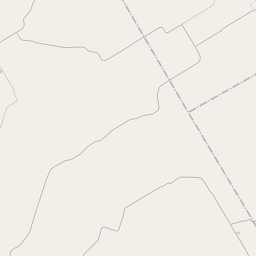Sadler Cemetery
Historical marker location:






Sadler Cemetery
Settlers, including many from Tennessee, arrived in the area around Rainey's Creek in the early 1850s. The community became known as Rainey's Creek until 1871, when the post office changed its name to Coryell City.
By that time, the community cemetery had been established on land set aside in the 1850s by Chester Calhoun Sadler (d. 1911) for his family, friends and neighbors. Sadler, a farmer, freighter, confederate veteran and community leader, came to Texas from Tennessee with his wife, Delia Douglas Cowan Sadler, and their children. Ira Bradford Sadler, Delia's son from a previous marriage, was a Confederate soldier and a prisoner of war; he later became a lawyer and served in the Texas Legislature. These individuals and several other Civil War veterans are buried here among the graves of their families and other pioneers.
As Coryell City grew, area residents began using church graveyards. The last burial in Sadler Cemetery was in 1940. Today, the site is maintained by Sadler descendants and community members.
Historic Texas Cemetery - 2002
As one of the most visible programs of the Texas Historical Commission (THC), historical markers commemorate diverse topics in Texas history, including: the history and architecture of houses, commercial and public buildings, religious congregations, and military sites; events that changed the course of local and state history; and individuals who have made lasting contributions to the state, community organizations, and businesses.
Texas is also home to the world's largest honky-tonk, Billy Bob's Texas in Fort Worth. The venue covers three acres and can hold up to 6,000 people.
During the Texas Revolution and the subsequent establishment of the Republic of Texas, Coryell County saw significant growth. The area attracted pioneers and settlers who were drawn by the fertile land along the rivers. In 1854, the county was officially organized and named after James Coryell, an early frontiersman who was known for exploring and surveying the area.
Throughout the late 19th and early 20th centuries, Coryell County experienced periods of prosperity and challenges. Agriculture, particularly cotton production, played a significant role in the local economy. The arrival of the railroad in the late 19th century enhanced the county's connectivity and spurred growth in trade and commerce.
The county also contributed to the military history of Texas. During World War II, Camp Hood (now Fort Hood) was established in the southern part of Coryell County. The military installation has had a profound impact on the local economy, serving as an economic engine and a significant employer for the region.
Today, Coryell County continues to thrive as a vibrant community. It is home to a diverse population and offers a mix of urban and rural landscapes. The county's rich history can be seen in its historic buildings, museums, and landmarks, all of which provide a glimpse into the past and contribute to the county's unique cultural identity.
Coryell County Timeline
This timeline provides a concise overview of the key events in the history of Coryell County, Texas.
- 1854 - Coryell County is established by the Texas legislature.
- 1859 - The county seat, Gatesville, is established.
- 1861-1865 - The American Civil War impacts Coryell County, leading to economic hardships.
- 1872 - The Texas Central Railroad is completed, boosting the county's economy.
- 1882 - The first county courthouse is constructed.
- 1905 - The original county courthouse is replaced with a new building.
- 1929 - The Coryell County Museum opens, showcasing the area's history.
- 1942-1946 - The county experiences growth during World War II due to the establishment of Camp Hood (now Fort Hood).
- 1963 - The current county courthouse is built, replacing the 1905 building.
- 1997 - The Coryell County Courthouse is added to the National Register of Historic Places.